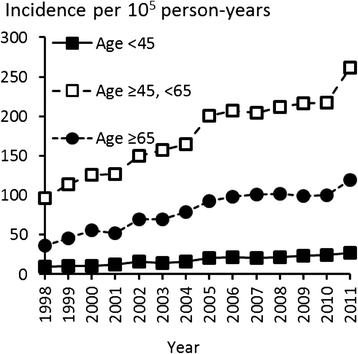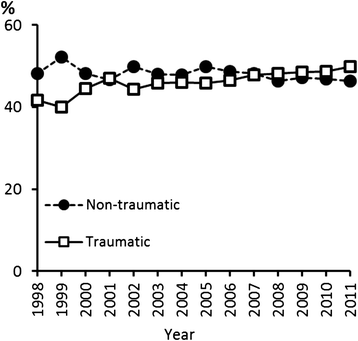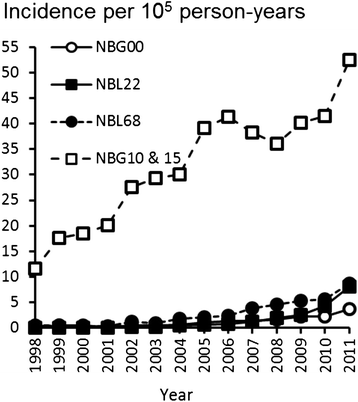Increasing incidence of rotator cuff repairs--A nationwide registry study in Finland
- PMID: 26265152
- PMCID: PMC4531533
- DOI: 10.1186/s12891-015-0639-6
Increasing incidence of rotator cuff repairs--A nationwide registry study in Finland
Abstract
Background: Rotator cuff repair incidence rates have reportedly increased in the United States and England. Here we analyzed nationwide data relating to rotator cuff repairs recorded in the Finnish National Hospital Discharge Register (NHDR).
Methods: The NHDR was reviewed to identify adult patients who underwent rotator cuff repair between 1998 and 2011. Incidence rates per 10(5) person-years were calculated using the annual adult population size.
Results: During the 14-year time period, 50,646 rotator cuff repairs were performed on subjects aged 18 years or older. The incidence of rotator cuff repair showed an almost linear increase of 204%, from 44 per 10(5) person-years in 1998 to 131 per 10(5) person-years in 2011. The most common concomitant procedure was acromioplasty, which was performed in approximately 40% of rotator cuff repairs in 2011. Other common concomitant procedures included tenodesis (7%) and tenotomy (6%) of the long head of the biceps tendon, and resection of the acromioclavicular joint (3%).
Conclusions: This nationwide analysis revealed a remarkable increase in the incidence of rotator cuff repair from 1998 to 2011 in Finland. This progress can be questioned, since there are not convincing data of the superiority of the operative treatment over non-operative management in all rotator cuff tears.
Figures





References
-
- Neer CS., 2nd Impingement lesions. Clin Orthop Relat Res. 1983;173:70–77. - PubMed
Publication types
MeSH terms
LinkOut - more resources
Full Text Sources
Other Literature Sources
Medical

